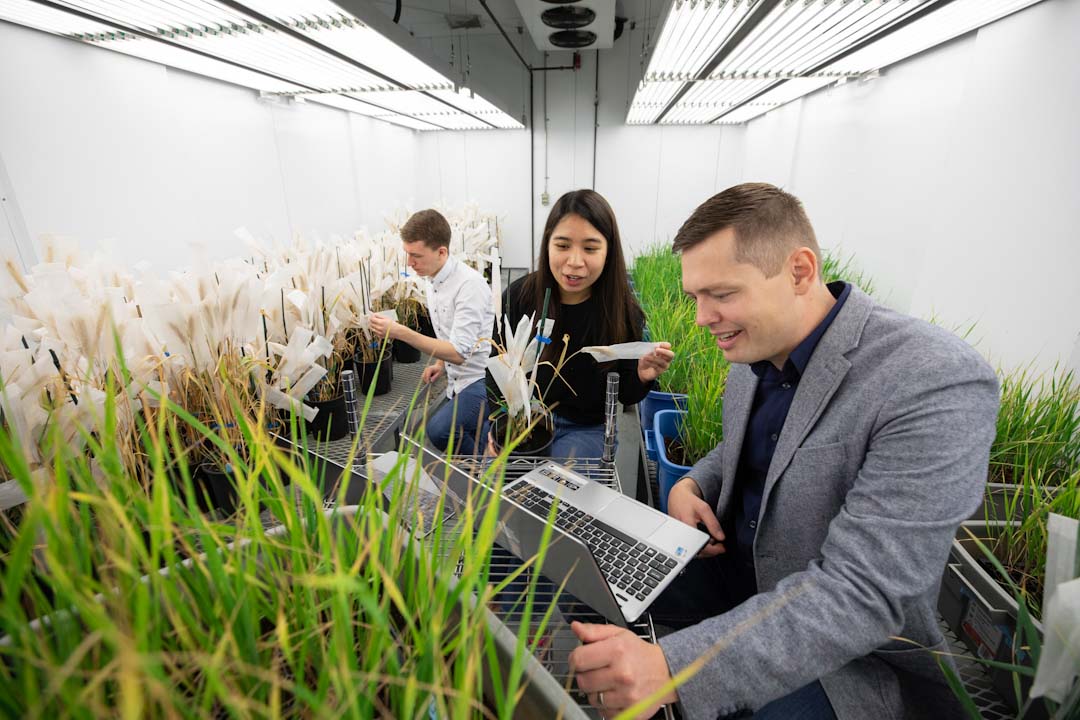
USask students training for the future in agriculture technology
SASKATOON – Graduate students at the University of Saskatchewan (USask) will experience a one-of-a-kind training opportunity thanks to a new program that has received a $1.6 million grant from the Natural Sciences and Engineering Research Council of Canada (NSERC).
By Katie Brickman-Young for Research Profile and ImpactThe NSERC CREATE grant in Computational Agriculture will explore the deep-rooted collaboration between plant and computer sciences at USask. The unique program will enhance the shift towards data-rich processes in the agricultural sector to drive economic competitiveness and environmental sustainability.
“This is an exciting opportunity for advanced training. This program builds on the strength that we have at the University of Saskatchewan in computer and plant science,” said Dr. Ian Stavness (PhD), associate professor in the College of Arts and Science, and Enhancement Chair at USask’s Global Institute for Food Security (GIFS). “USask has been promoting and cultivating their signature areas [of research] and agriculture is one of them. I think this [funding] is recognition of our current world-leading place in this field.”
Over the course of six years, the program will offer dedicated cross-disciplinary training in agricultural and computer science to 87 students. Students in the computer science program from the College of Arts and Science will come together with students from the plant sciences program at the College of Agriculture and Bioresources to cross-train subjects and collaborate on research in agriculture and technology.
“I think one of the critical aspects of this program is the cross-training component. Plant sciences students will be trained in data science approaches and programming – areas where they wouldn’t [traditionally] have core training,” explained Stavness. “And the computer science students will get training in biology, plant genomics, and plant breeding and other core topics they haven’t been exposed to before.”
There will be an equal number of trainee students from both streams exposed to the wealth of opportunity in agricultural technology and applying their expertise to agricultural problems.
“The research outcomes will be ongoing, and we expect to see research results immediately and continuously from our graduate students as they move through this program,” he said.
As environmental changes put pressure on the agricultural and food production sectors, using data analysis to drive change for sustainability will be key, not only for these students, but also the companies and organizations they will work with during their time in the program.
“There is a lot of interest in agricultural solutions to combat climate change. We have significant challenges with more variable weather conditions in different regions across Canada and around the world,” said Stavness. “With this computational analysis program, we are hoping to support advances to adapt agricultural systems to those changing patterns, making plants and cash crops more resilient to those changing conditions.
“[USask has] real strength in plant breeding from the specialists at the Crop Development Centre, and with our computational side, we can build new tools to generate those new varieties that will be resistant to climate change and provide environmental and economic sustainability for farmers.”
Trainees will put their skills to work in professional rotations or company internships and at three training hubs in Alberta, Saskatchewan, and Manitoba. The training program will also strengthen the international reputation achieved through the Plant Phenotyping and Imaging Research Centre at USask. The Global Institute for Food Security at USask is also a key partner who will be providing professional development and entrepreneurship training for graduate students in the program.
“Their experiences will be enriched through those rotations and internships. Through those, they will get a better sense of the real needs for ag-tech companies, organizations, growers, and agronomists,” said Stavness. “Those needs will certainly drive a lot of the research problems that we will pursue so they can really tackle the most important problems that will have the most impact in the sector.”
Stavness and his program counterparts are looking forward to seeing the accomplishments of the students as they explore this unique experience at the intersection of plant and computer science.
“When they graduate, they are going to be the employees and leaders in agricultural technology companies and/or entrepreneur activities,” he said. “We see the main outcome is the people and how they will be conducting world-leading research and developing state-of-the-art tools and critical solutions for growers to use to make decisions on the management of their crops.”
-30-
For media inquiries, contact:
Victoria Dinh
USask Media Relations
victoria.dinh@usask.ca
306-966-5487

